Diesel locomotive builders
1. American Locomotive Company
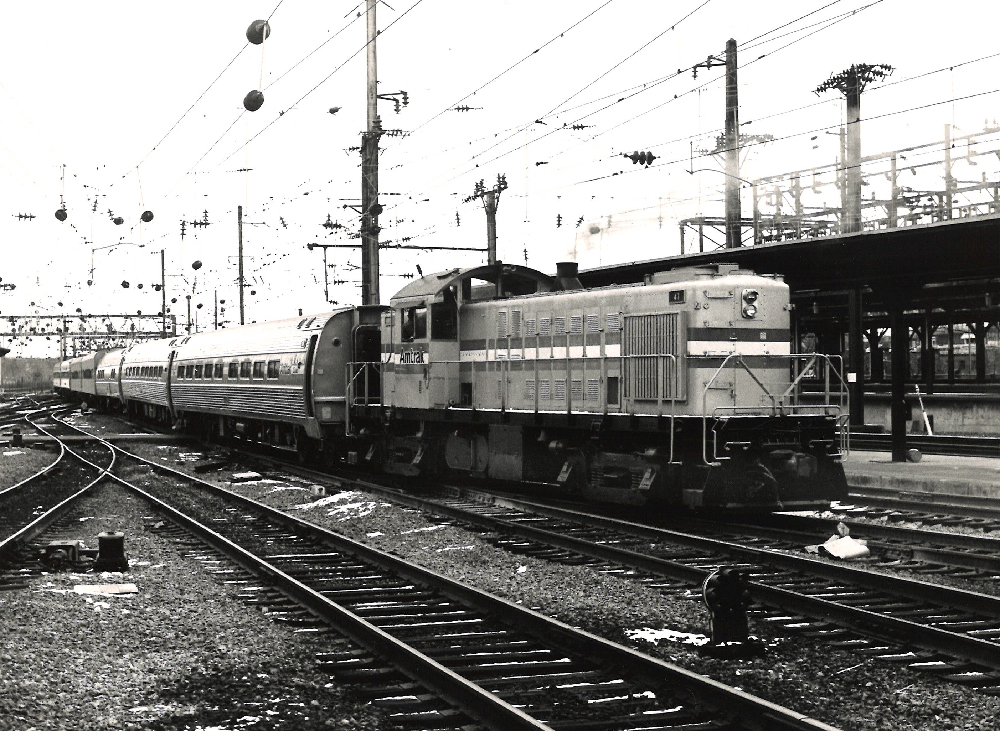
For many years after World War II, Alco — the American Locomotive Company — was the second place diesel builder in the United States. The company’s history as a steam locomotive manufacturer dates from 1901.
The Schenectady, N.Y.,-based firm began producing its first diesels in conjunction with suppliers General Electric and Ingersoll-Rand in 1924, using its traditional name, American Locomotive Company.
From 1940 to 1953, Alco and GE combined their locomotive sales forces and marketed their products under the joint Alco-GE name. Although American Locomotive’s steam and diesel locomotives had long been known as “Alcos,” the name Alco — a contraction of American Locomotive Company — was not made official until American Locomotive changed its name to Alco Products in 1956, four years before Alco and GE split over GE’s entry into the domestic locomotive field.
For simplicity’s sake, any locomotives built under the foregoing names can be called “Alcos.”
North of the border, Alco’s Canadian subsidiary was the Montreal Locomotive Works. In 1968, it adopted the name MLW-Worthington Ltd. in deference to the 1967 acquisition of MLW by Worthington, a subsidiary of Studebaker-Worthington. In 1979, MLW-Worthington Ltd. was acquired by Bombardier Inc., which marketed refined versions of several Alco designs until its exit from the locomotive market in 1987. As is the case with Alco, locomotive-watchers commonly refer to locomotives built under the foregoing names as “MLW’s,” although since MLW’s products were based on Alco designs, they are frequently lumped under “Alcos” too. Bombardier’s later designs, on the other hand, are considered unique and the old MLW or Alco labels are usually not applied.
If there’s one word to describe Alco’s reputation as a locomotive supplier it is “innovative.” In pre-World War II times, when the Chicago, Rock Island & Pacific asked for a locomotive for branch-line service, Alco added road trucks and a short hood to a 1000 hp switcher and created what became known as the RS1, the first road-switcher style diesel.
Alco’s 1500 hp RS2 — the RS1 taken one step larger — debuted three years before rival EMD unveiled its similar 1500 hp GP7. Other Alco innovations include the first mass-market six-motor unit (the RSD4) and the first use of an AC alternator instead of the conventional DC generator (Atlantic Coast Line C630 No. 2011 in 1966). Alco also pioneered remanufacturing in 1965 when it outshopped four Milwaukee Road RSC2s with upgraded components.
Alco quit the new-locomotive market in 1969.
Looking for more on Alco, check out “Best-selling Alco diesel locomotives.”
2. Baldwin
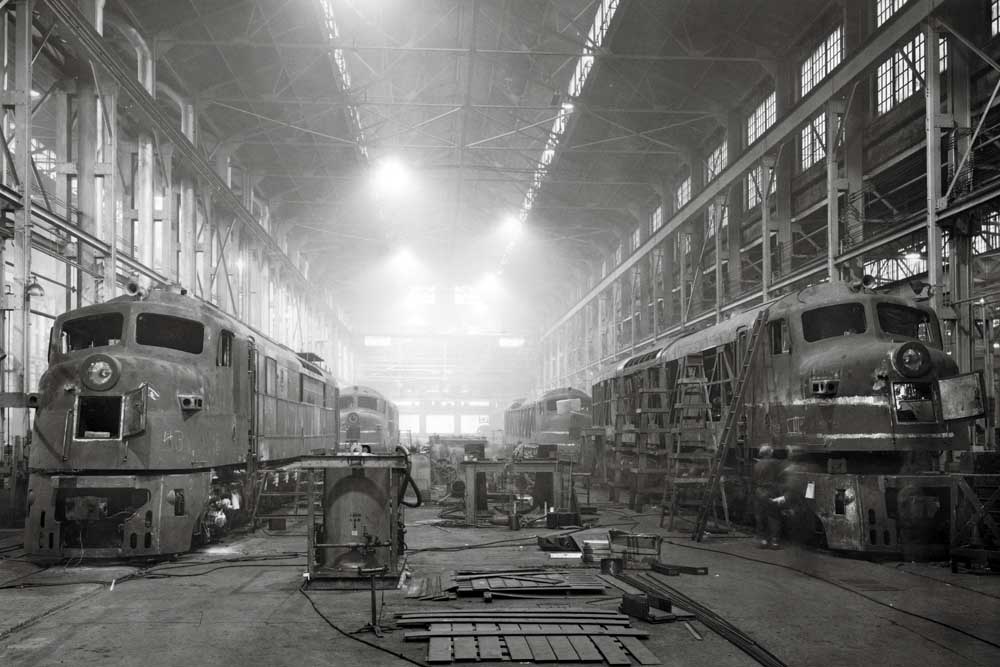
Another member of the “Big Three” that turned from steam to diesel was Baldwin, the generic name for diesels of both Baldwin Locomotive Works and Baldwin-Lima-Hamilton Corporation — the latter the product of a 1950 merger.
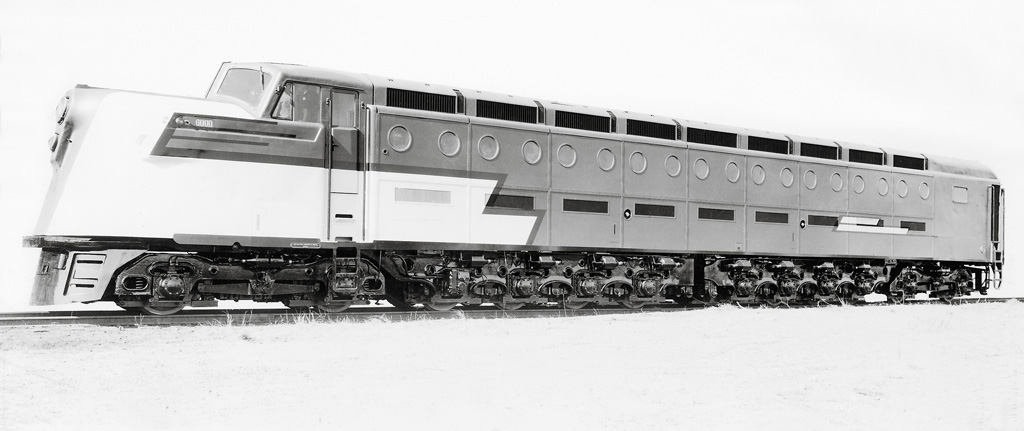
Regardless of what was on the builder’s plate, however, Baldwin never enjoyed the success of Alco, let alone EMD, which was the top builder in the 1940s and 1950s.
Like Alco, Baldwin enjoyed a relationship with its electrical supplier, Westinghouse Electric & Manufacturing Co.
After some experimentation, Baldwin launched a line of standard diesel switchers in 1939; road diesels — a more profitable market — came as soon as possible after World War II concluded in 1945.
All of Baldwin’s production was performed at Eddystone, Pa., just south of Philadelphia, until BLH’s departure from the market in 1956.
If you had a special request for a diesel locomotive, you knocked on Baldwin’s door. Ask for a bidirectional, high-horsepower locomotive for slow-speed transfer service and Baldwin cheerfully supplied a twin-engine, 2000 hp, center-cab tabbed the DT-6-6-2000.
Need a monster 3000 hp passenger unit with more wheels than numbers and letters in its model designation? Baldwin’s answer was the DR-12-8-1500/2, commonly known as the “Centipede.”
For more about Baldwin, check out “Best-selling Baldwin diesel locomotives.”
3. Electro-Motive Division
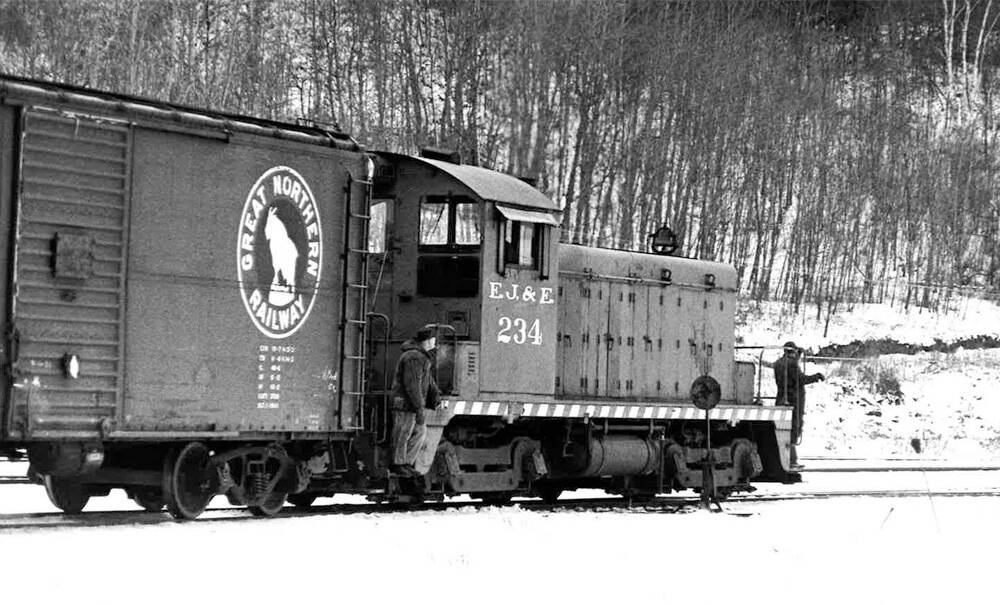
Electro-Motive was the unquestioned top locomotive supplier until the early 1980s.
It began as the Electro Motive Corporation, a gas-electric car design outfit purchased by General Motors in 1930. In 1941 EMC and subsidiary Winton Engine, which supplied the diesel engines for EMC switchers, were merged into General Motors Corporation, and their organizations and assets became the Electro-Motive Division of General Motors.
Products of Electro-Motive Corporation are known as “EMCs” and Electro-Motive Division as “EMDs,” but in the last few years, describing GM locomotives has become more tricky.
In 1950, the company broke ground in London, Ontario, for its Canadian locomotive subsidiary, General Motors Diesel Ltd., known simply as GMD. GMD then changed its name to General Motors Diesel Division. In 1988, General Motors shifted all new locomotive assembly to London, leaving EMD to build diesel engines and other components, which are then sent to London for final assembly.
Consequently, there is no such thing, technically, as an EMD, SD60M, because all such units are assembled in London by GMDD. There are, however, EMD SD60s (minus the “M” designation) built at EMD’s factory in McCook, Ill. (the postal address is nearby La Grange). Confusing matters more are units such as Burlington Northern SD40-2s Nos. 7167-7205, which were built by GMDD in 1979 when EMD was overbooked with new locomotive orders.
Were such units GMDDs or EMDs? It’s hard to tell the suppliers without a scorecard, or at least a comprehensive, up-to-date roster.
Which one word best describes GM locomotives? How about standardized? Or utilitarian? Or elegant?
Certainly those words describe many of GM’s products: yeoman GP7s, one of several GM non-turbocharged, four-motor road-switchers known as “Geeps”; leggy, streamlined E-series six-axle passenger diesels; businesslike NW- and SW-series switchers; and the boxy, angular GP and SD models introduced after 1964, usually called “second generation” diesels, because they were the first built to replace older diesels, rather than steam locomotives.
Although EMD’s market share dropped to second place behind GE in 1983, EMD locomotives remain a fixture on today’s railroad scene.
In January 2005, GM sold EMD to Greenbriar Equity Group LLC and Berkshire Partners LLC.
Read this article on Electro-Motive: “Best-selling first-generation Electro-Motive diesel locomotives.”
4. Fairbanks-Morse
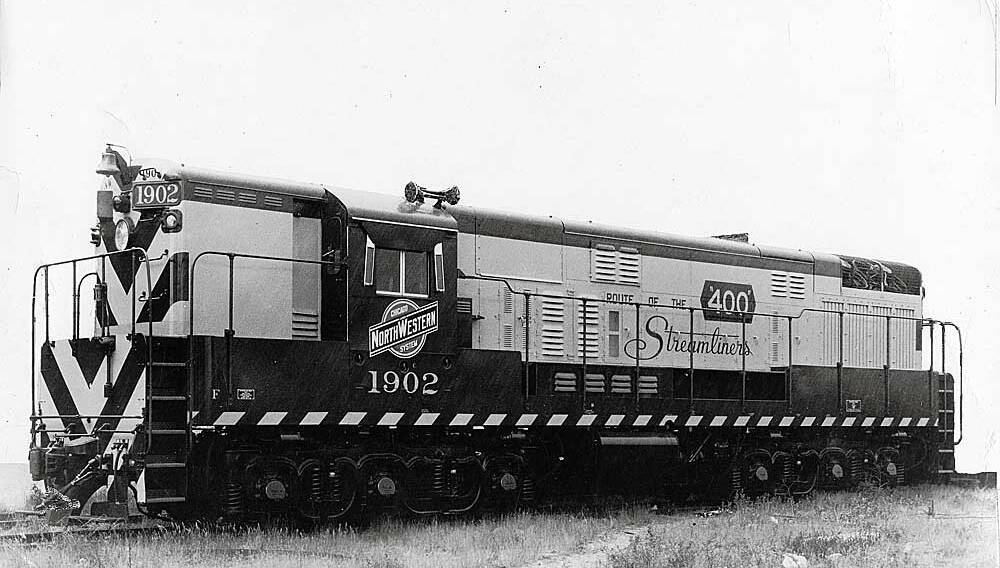
Unfortunately, the same can’t be said of supplier Fairbanks-Morse.
F-M’s entry into the North American locomotive market was the happy result of two facets of F-M. One was an old-line railroad supply firm that produced pumps, track cars, and other railroad-related items. The other was a supplier of non-railroad diesel and gasoline engines, which gained renown for the development in the 1930s of a highly successful opposed-piston diesel engine for submarines. F-M’s opposed-piston engine powered about half of the U.S. Navy’s World War II submarines. One version of that opposed-piston engine made a name for itself in repowering old gas-electric cars. The firm entered the new-locomotive market in 1944.
From 1944 until 1949 F-M had its road units assembled under contract at GE’s Erie, Pa., works, prompting those units (all six-axle passenger cab units) to be known as “Erie-builts.”
All F-M yard units and road-switchers were produced at FM’s Beloit, Wis., plant during this time, and all F-M locomotives called Beloit their birthplace from 1949 until F-M quit the trade in 1963.
F-M’s units appealed to the senses. Their unique opposed-piston engines made a distinctive booming or drumming sound that were unlikely to be confused with anything else.
When F-M’s were under-maintained, they had a tendency to smoke. But unlike Alco’s 244-engine models, which were known for throwing clouds of black smoke upon rapid acceleration because of turbocharger lag, F-M’s spewed whitish-blue clouds of volcanic intensity.
Aesthetically, F-M switchers and road-switchers were characterized by boxy, no-nonsense lines and long, tall hoods — traits not masked by design flourishes added to early F-M’s by noted industrial designer Raymond Loewy.
Perhaps the most famous F-M is the Train Master, a 2,400 hp six-motor unit built between 1953 and 1956. Dieseldom’s so-called “second generation” generally refers to the high-horsepower race conducted by EMD, GE, and Alco in the early 1960s, but when you consider the state of high-horsepower six-motor diesels in 1953, EMD’s 1,500 hp SD7 and Alco’s 1,600 hp RSD5 were bush-league compared with F-M’s 2,400 hp Train Master.
Today F-M has all but vanished from the railroad scene. Not a single road-switcher unit survives in service in the United States or Canada (where F-M produced its designs in conjunction with Canadian steam builder Canadian Locomotive Corporation in Kingston, Ont.). A handful of switchers survive on industrial railroads and at various military installations around the country.
For more information, check out “Fairbanks-Morse Erie-Built diesel locomotives.” Or read “Best-selling Fairbanks-Morse diesel locomotives.”
5. General Electric
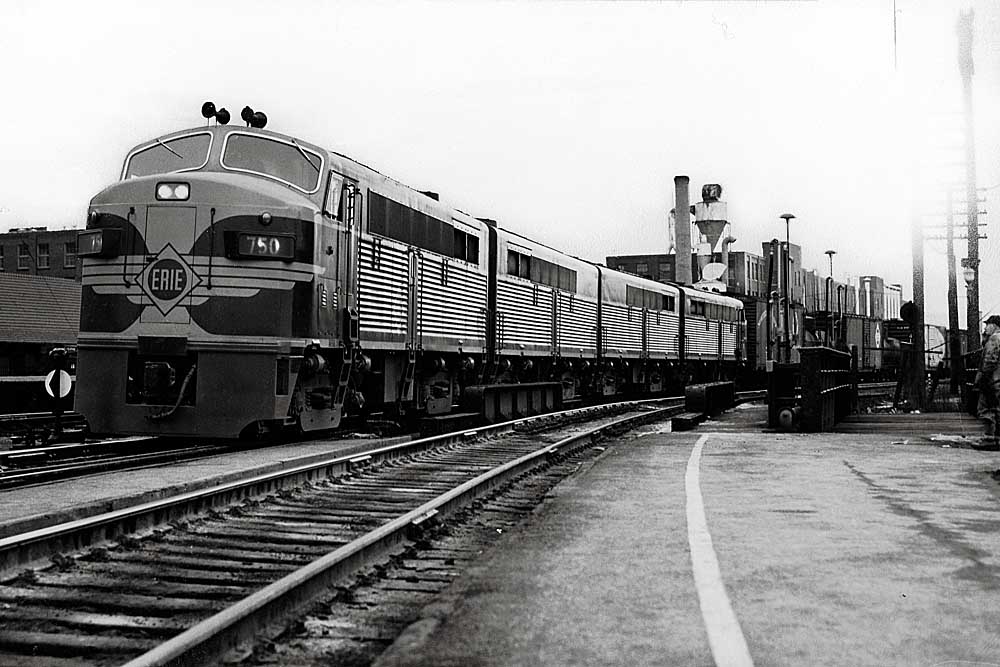
Readers who regard General Electric as a late-comer to the North American new-locomotive market may be surprised to learn that GE, in conjunction with Ingersoll-Rand, fielded a respectable line of switchers in the 1930s using engines supplied by IR and Cooper-Bessemer.
While a partner with Alco between 1940 and 1953, GE produced what many consider to be the archetypal center-cab switcher, the 44-tonner, so named because of its 88,000-pound weight. This was the biggest one-man locomotive possible under a 1937 diesel agreement that prevented the railroads from operating any diesel over 90,000 pounds without a fireman. GE also offered a 70-ton model (for branch lines with restricted axle loadings) and a 95-ton model (a beefed-up 70-tonner).
GE’s switcher line eventually expanded into the “1974 line,” consisting of three models between 600 hp (the SL80), 800 hp (SL110), and 1,100 hp (SL144). While all three were designed as industrial units, GE attempted to promote the SL144 as a Class I railroad switcher. A pair of SL144’s subsequently demonstrated on Chicago & North Western and Burlington Northern before being sold to industrial customers.
In terms of marketing road diesels, Alco and GE went their separate ways in 1953, although GE continued to supply the former with electrical gear.
During the 1950s, GE dabbled in road diesels-research which culminated in 1959 with the introduction of the U25B. The U stood for “Universal,” the 25 for 2,500 hp, and the B for four-motor trucks. But what U25B spelled was a serious challenge to diesel suppliers EMD and Alco. The U25B helped rocket GE to second in the diesel locomotive market spot, bumping Alco to third place from which it would never truly recover. And, the U25B’s higher horsepower and centralized air system made EMD’s then-current GP20 seem like the same old Geep with a turbocharger tacked on, prompting EMD to meet the challenge with its 2,250 hp GP30.
In 1983, GE finally toppled EMD from its top ranking, but the rivalry between the two continues to this day.
GE can hardly be accused of treading water in the domestic locomotive market, especially in terms of aesthetics. For instance, compare four-motor GE models against their EMD competitors. While the shape and contour of EMD diesels changed little from the GP35 of 1964 to the advent of widecab SD60Ms in early 1989, GE’s U-series diesels from the same period — referred to as “U-boats” — went through several external changes. Most evident to the trackside observer were windshields (one-piece at first, then split); the size of their short hoods (long at first, then drooped, then short and drooped); the size and shape of their radiators (from the U25B’s uncluttered lines to the flared, bat-wing-like radiators found on later U33 and U36 models); to road trucks, beginning with the traditional AAR Type-B truck and changing to GE’s own FB2 “floating bolster” design. The vagaries of GE locomotive aesthetics continued with the squared off carbody lines and flared radiators of its Dash 8 series. Flared radiators are a hallmark of GE’s modern AC4400s and 6000s.
6. Lima-Hamilton
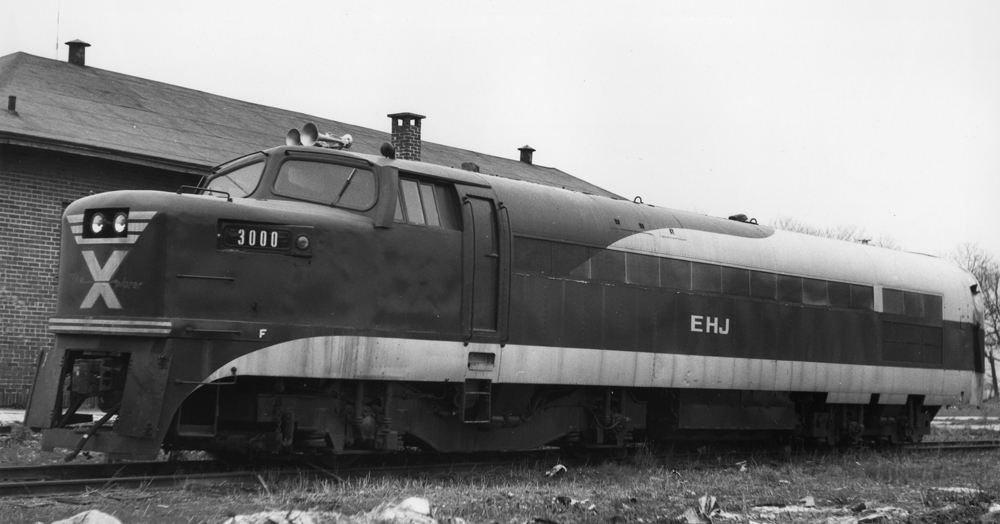
Changes in design are about the last things that characterize the sixth major builder, Lima-Hamilton, That is because Lima, as it’s generally referred to (and pronounced LIE-mah, not lee-mah), was not around long enough to tinker with its diesel designs.
Lima dipped its toe into the domestic diesel market in 1947 when it was clear to the company that steam was, in a word, dead. It merged with engine-maker Hamilton and trotted out its first switcher in 1949. When Lima merged with rival supplier Baldwin a year later, the fate of Lima diesels was written on the wall. A year later all Lima locomotive production ended without being carried over into Baldwin’s locomotive catalog.
All Lima locomotives were constructed at the old steam erecting shop in Lima, Ohio; engines were produced at the Hamilton factory in Hamilton, Ohio.
At the risk of offending any Lima aficionados, the company’s products were hardly distinctive, at least aesthetically. Lima’s four switcher models — 750, 800, 1,000, and 1,200 hp configurations — looked like severely squared off Baldwins or elongated Alcos. The same can also be said of Lima’s sole four-motor road-switcher model: a 1,200 hp unit that resembled Alco’s pioneering RS1; and a double-engined, 2,500 hp, center-cab model that looked like a squared-off version of Baldwin’s center-cab.
If anything stands out on Lima diesels it’s the rounded corners on their windshields, not exactly something to raise the average diesel enthusiast’s excitement level.
Limas, like F-M’s, were hardly best-sellers. Lima, in fact, never sold a locomotive to a railroad west of Kansas City, Mo. The farthest west Limas got was on St. Louis-based Wabash. A couple of short lines and museums are the only places you can find Limas today.
More on Lima-Hamilton, read “Lima-Hamilton Locomotives: Diesels that didn’t.”
Originally published May 1, 2006.














Don’t know when this was written, but the stories on both GE and EMD don’t reflect today’s reality. GE’s Dash 9 and Evolution series of 6 axle freight locomotives completely dominates the industry, and I believe their ES and ET Evolution series have the record of highest volume sold. EMD, now part of Caterpillar, does successful rebuilds and some overseas sales but not new Tier 4 freight diesels since their final offering in 2017/2018, the SD-70ACe-Tier 4, was a complete flop.